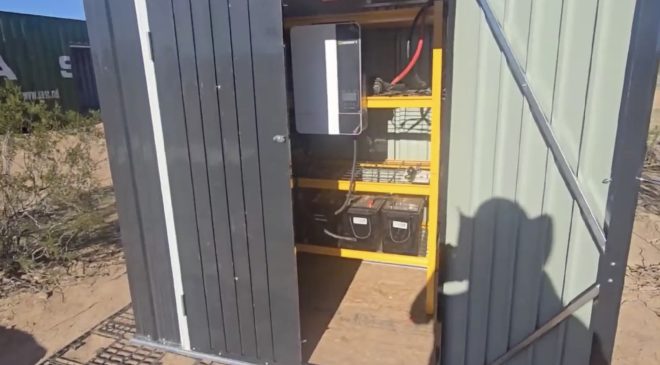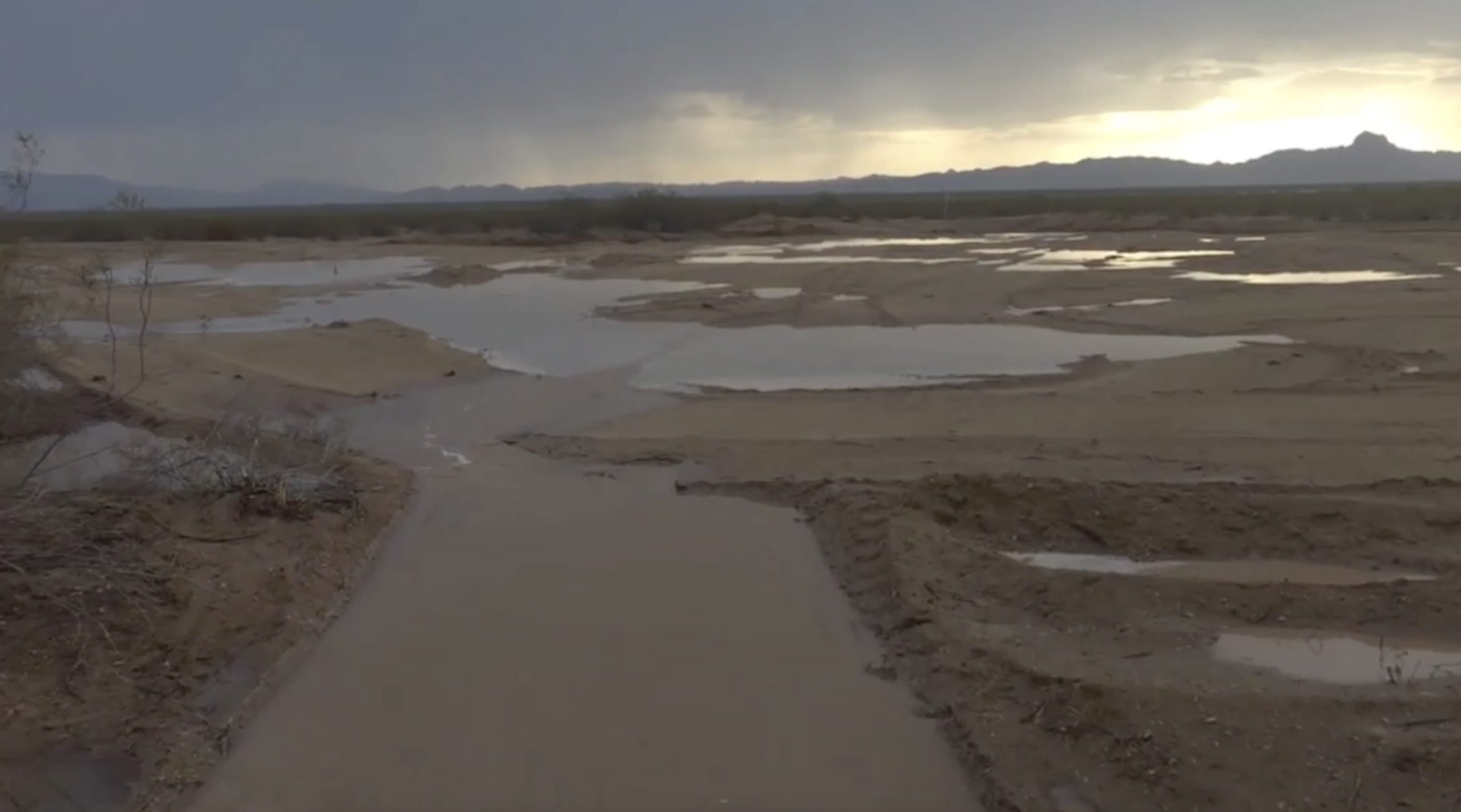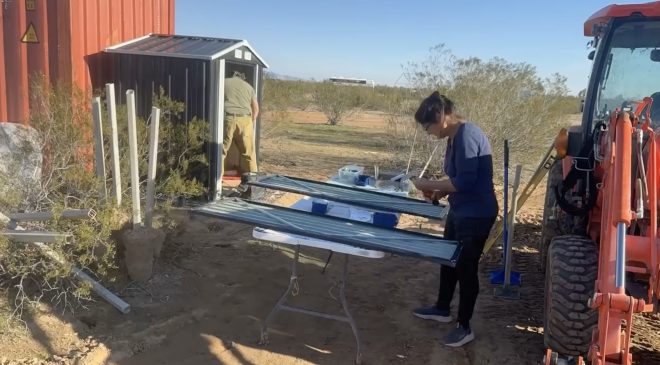
Workshop Power-Up: Battery Shed & Predator-Proof Coop!
In this episode of Occupy the Land, Ernie and Donna

In this episode of Occupy the Land, a powerful half-hour thunderstorm hits our Arizona desert property, giving us a chance to test our water management plans! We showcase how we channel monsoon waters into our sand pond and compost ditches, preparing for future gardening and soil projects. From assessing drainage channels to managing berms and organic material, join us as we navigate the challenges of a sudden downpour, lose a canopy to the wind, and plan for deeper sand ponds to capture hundreds of thousands of gallons for our off-grid dome build!
Transcript:
This is from a powerful but very short thunderstorm and half hour. I mean it just, boom. This is what I’m talking about. When the monsoons get here for real controlling this water is going to be a one time thing and you got enough for, like, years. So this is what we’re trying to control. And then you see, you know, there’s our buildings over there and our storage trailer,
the back end of the property, road. And this is now that we get a good rain like this, I can see what I need to do. There’s not really much, you know, just a little, you know, moving here and keep moving dirt there and that kind of this is where it’s draining into. There’s probably 3 or 4 of these channels that I have that feed into where the sand dam is going to go here.
And you can see I just got a half hour and let’s see how much we got at the far corner there.
Holy crap. Things like full already. This is, we’re going to this whole area here is being, soil is being used for various projects and so on, but we keep digging it down. We need it at least six feet down and, surrounded by this berm. This is the back corner of the property. And let’s see how much water we got.
Now, when the monsoons come, it’s like weeks of this. Yeah. Here we go.
Now, that’s probably about eight feet deep in the corner there where I’m taking the water. This is what I’m talking about.
Hundreds of thousands of gallons. All you gotta do is catch it.
Im afraid to go out there. I know it’s pretty deep.
And we lost a canopy, he awning that we had on the side of the bus just a little bit ago, tanding there and a big burst hit. Boom! And it was gone. So. Right. We need to get there. I was surprised that thing last as long as it did anyway. But, we’re going to have to get a shipping container and, be able to put stuff in for the storms that’s coming.
We knew that, but we thought we had, you know, well, it’s July. You know, I guess it’s time usually just like mid-July. We thought we had a couple of weeks, but I did not. Okay. Now, this is one of the main washes that I had. I had the generator going. I don’t think it’s going to be sunny today.
And I want to make sure the batteries topped off. I got a bunch of shows to do today. So this is the wash. It’s not too deep and it’s about eight inches. So what we’re going to do, and I just walked this to show you one of the main what damage in deep, is going to where it turns and goes to the main sand pond.
Now over here, you’ll see a brush pile that we have and that is being composted by that, shredder chipper that’s under that canopy there. You know, go up here and I’ll show you what’s up. Now, this is a compost ditch that I did for just this reason, all of the chipped up stuff from that organic material there and some of the straw that we have and so on, we just put it over here and just let it compost.
But you need moisture. You need it to get wet. Well, what I did is I created that, ditch there off and parallel to this channel. So that, so that as it comes in, it kind of goes around over here, and then it fills that, compost area up with water, so it’ll compost better. So. And there it is.
So this is where we just keep, you know, putting our organic material and, it’ll take, God years. You know, this would be where we get all our soil for, you know, gardening and stuff like that. Now, you can see here’s a good angle to see what we’re doing here. This road, this berm around the sand pond here is built up from the soil that I’m pulling from here.
So we just keep pulling it. Pull. And I haven’t really made a conscious super effort to create the sand pond here, but we’ll get to it. And as we’re doing this, it’ll be, you know, probably a couple of years before I get it the way I want. But, you just got a plan. You just start chipping away at it.
And then I wanted to make sure that we had clear drainage that comes from. This is the side of the land. This is, the east road. So as it comes out, that was torn out. See? What’s up? That. Here you go. The water flowing on the east road is coming down. It gets diverted here. And it goes in to these channels that feed the sand pond back here.
So this is what I needed. Was a good rain like this. So I can come out and kind of see the flow or I need to lower it, you know, carve the soil and land in the where to get the water to go there. That is the plan. And then however I can use it, you know, doing my stuff.
Oh two minutes. I got to get in and do a show. All right. Well, this is our probably the second rain we’ve had in a year. Peace.
https://x.com/occupy_the_land/status/1946294268613583333
https://rumble.com/v6wd0gk-storm-surge-channeling-water-for-off-grid-living.html
https://www.brighteon.com/c37b741f-827e-42ba-bcb5-339e942e9107

In this episode of Occupy the Land, Ernie and Donna

In this episode of Occupy the Land, we transform our

In this episode of Occupy the Land, Ernie builds a